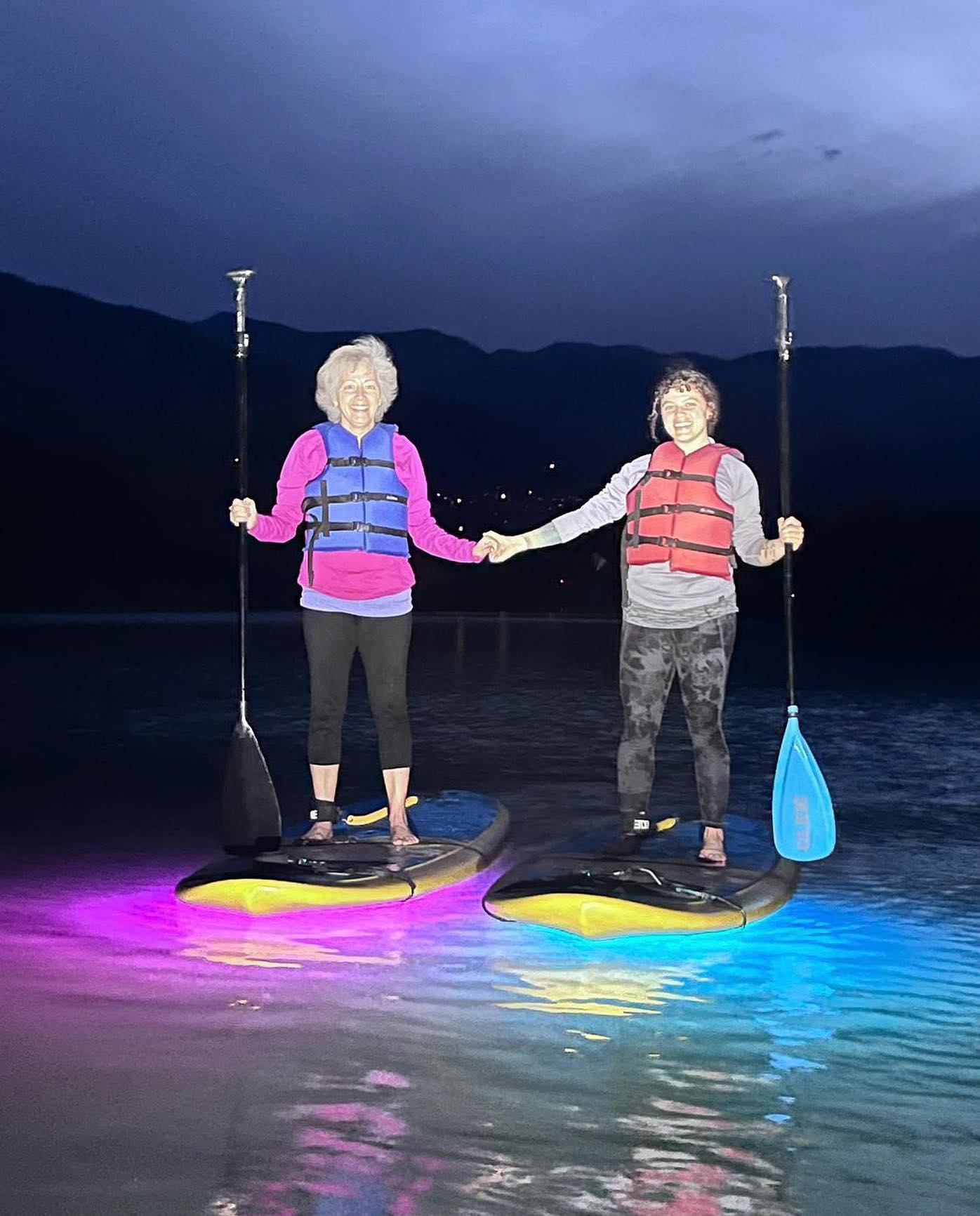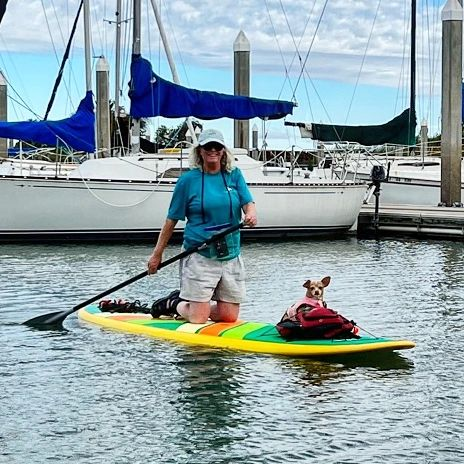
Paddle Boarding for Seniors: Enjoying SUP at Any Age
Paddle boarding is the perfect low-impact sport for seniors. Learn how SUP can boost balance, strength, and mental well-being—with gear and safety tips to match.
Paddle boarding for seniors combines gentle exercise, balance training, and outdoor relaxation in one rewarding sport.
By choosing a stable board, learning proper technique, and prioritizing safety, older adults can enjoy paddle boarding well into their golden years—proving that it’s never too late to start something new.
Table of contents
Why SUP Is Perfect for Older Adults
Stand-up paddle boarding (SUP) isn’t just for thrill-seekers—it’s a gentle yet powerful way to stay active, strong, and centered at any age. Seniors across the globe are discovering that paddle boarding provides a full-body workout, stress relief, and the chance to explore nature from an entirely new perspective.
The beauty of paddle boarding for seniors lies in its adaptability: whether you’re gliding across a calm lake or enjoying a sunrise float near shore, SUP meets you where you are—no matter your fitness level.
- Low-Impact Full-Body Workout: Paddle boarding strengthens the core, legs, and shoulders without putting stress on joints, making it ideal for seniors maintaining fitness.
- Boosts Mental Wellness: Time on the water reduces stress, enhances mood, and promotes mindfulness through rhythmic paddling and a connection with nature.
Accessible and Adaptable: With stable inflatable boards and calm-water practice, seniors can enjoy stand up paddle boarding safely at any experience level.

Benefits of Paddle Boarding for Seniors
1. Low-Impact Full-Body Exercise
SUP engages your core, legs, arms, and back without pounding your joints. The gentle resistance of water builds strength, improves endurance, and enhances flexibility—making it a perfect activity for those managing arthritis or joint sensitivity.
2. Balance and Core Stability
Balance is one of the first things to fade with age, but SUP naturally strengthens the stabilizing muscles that keep you steady on and off the water. The simple act of staying upright on a paddle board helps train coordination and posture—skills that reduce fall risk in daily life.
3. Mental Health and Mindfulness
There’s something deeply calming about gliding across glassy water. Paddle boarding encourages mindfulness, helping reduce stress and anxiety. The rhythmic paddle strokes, open air, and quiet connection with nature make SUP as meditative as it is invigorating.
4. Social and Community Connection
SUP isn’t only a solo pursuit—many seniors join local paddle groups or SUP yoga classes for social connection and shared adventure. It’s a wonderful way to stay active while meeting new friends who share your love of the outdoors.
Getting Started: Gear and Board Selection
Choosing the Right Board
For seniors, stability and ease of use are key. A wider, longer all-around board provides the best balance. Glide’s inflatable paddle boards, such as the O2 Retro or Lotus, are lightweight, durable, and easy to carry—perfect for beginners. Inflatable boards also pack neatly into a travel bag for simple storage and transport.
Selecting the Right Paddle
Use an adjustable paddle sized for your height—typically about 8–10 inches taller than you. Glide’s lightweight carbon paddles reduce fatigue while offering excellent control.
Safety Essentials
Always wear a personal flotation device (PFD) and use a leash to keep your board close if you fall. Even on calm water, these two items can make all the difference. Bring a whistle and keep your phone in a waterproof case for added security.

Technique Tips for Senior Paddlers
-
Start on calm, flat water to build confidence.
-
Begin kneeling before standing to find your balance.
-
Keep your knees slightly bent and your feet shoulder-width apart.
-
Engage your core—power your strokes from the torso, not just your arms.
-
Take your time and rest as needed; SUP is meant to be enjoyed, not rushed.
If standing feels unsteady, attach a kayak seat and paddle from a seated position for comfort and confidence.
Safety and Comfort on the Water
Know Your Limits
SUP is about enjoyment, not endurance. Paddle within your ability, choose familiar locations, and avoid strong currents or high winds. Check conditions before every outing—especially temperature, wind speed, and potential storms.
Dress for the Conditions
Layer for comfort: a moisture-wicking base layer, neoprene booties for colder water, and sun-protective clothing for warmer days. Don’t forget polarized sunglasses and reef-safe sunscreen.
Paddle With a Buddy
Whenever possible, paddle with a friend or group. Not only is it safer, but sharing the serenity of the water makes the experience that much richer.
Fun SUP Activities for Seniors
SUP Yoga
SUP yoga blends balance, breath, and movement into one peaceful practice. It’s an excellent way to improve flexibility and focus while floating in nature’s studio. Even basic poses like seated twists or gentle lunges can offer major benefits.
SUP Touring
For those who want to explore further, touring boards glide efficiently across long distances. Pack light snacks, hydration, and a waterproof bag—and enjoy scenic paddles that challenge the body while rejuvenating the spirit.

Final Thoughts
Paddle boarding offers seniors a unique way to stay fit, build confidence, and enjoy the outdoors. With the right equipment, proper safety measures, and a little patience, anyone can discover the calm strength that comes from balancing atop a board.
Whether you’re paddling on a peaceful lake or exploring coastal inlets, SUP reminds us that age is just a number—and adventure never expires.
FAQs
Is paddle boarding safe for seniors?
Yes, especially when practiced on calm water with proper safety gear. Always use a PFD and paddle within your ability.
What is the best paddle board for seniors?
A wide, stable inflatable SUP—like the Glide O2 Retro—is ideal for seniors due to its balance, portability, and comfort.
Can I paddle board if I have joint pain or arthritis?
Absolutely. SUP is a low-impact workout that strengthens muscles without stressing joints. Always consult your doctor before starting any new activity.
Do I need lessons before paddle boarding?
Lessons aren’t required but can be very helpful for learning balance, paddling technique, and safety basics.
Can I sit on the paddle board instead of standing?
Yes. Many seniors use a kayak seat to paddle while seated—it’s a comfortable, stable option for long sessions.
What muscles does paddle boarding work for seniors?
Paddle boarding activates your core, shoulders, back, legs, and glutes, making it a full-body workout. It helps maintain strength and coordination—especially important as we age.
How often should seniors paddle board for fitness benefits?
Even 2–3 sessions per week can improve balance, flexibility, and endurance. Start with short 30–45 minute paddles and gradually increase duration as confidence grows.
Can seniors do paddle boarding in colder weather?
Yes—many seniors enjoy winter paddle boarding with proper gear. Wear a wetsuit or drysuit, use neoprene gloves and booties, and always check water temperature and weather conditions before heading out.





